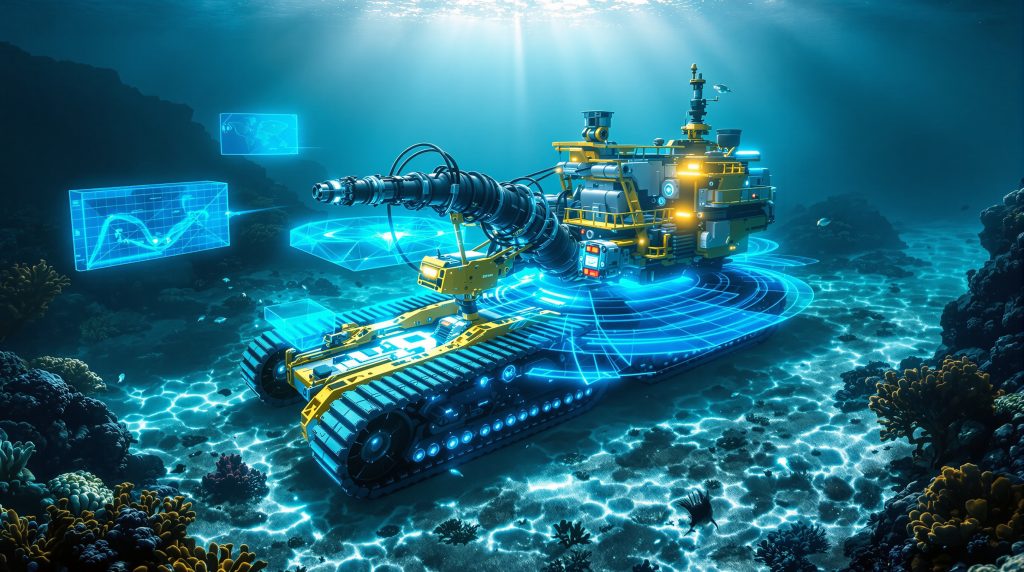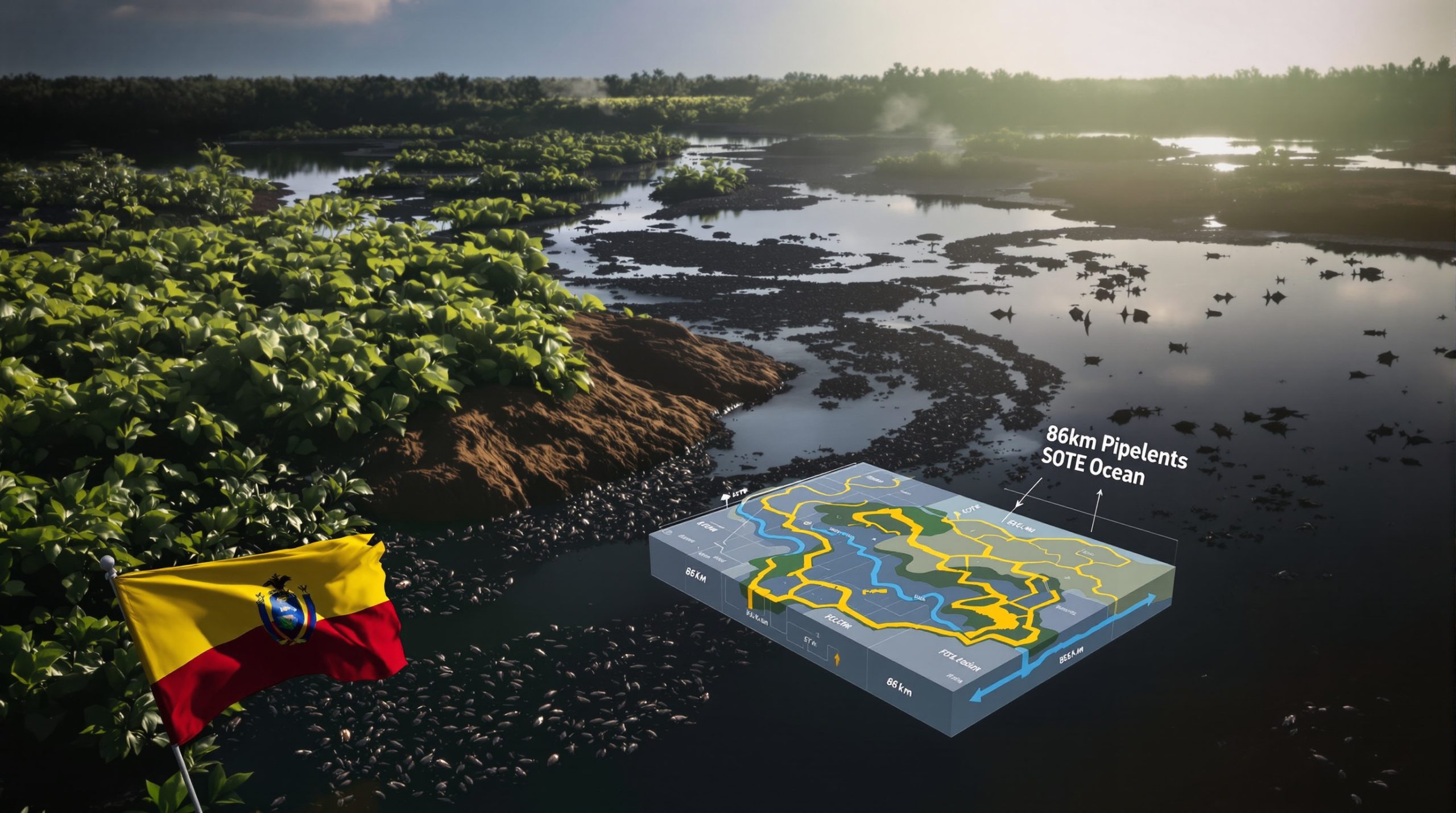How Are Diamonds Recovered from the Ocean Floor?
Marine diamond mining has evolved dramatically from its early days of shallow water operations. Today's advanced subsea crawlers operate at depths of 100-135 meters, extracting diamond-bearing material with unprecedented precision and efficiency. These sophisticated machines represent the culmination of decades of engineering innovation, combining robotics, hydraulics, and specialized sensing technologies to locate and recover diamonds from the seabed.
The journey from basic dredging to today's high-tech recovery systems illustrates the industry's commitment to mining industry innovation and efficiency in accessing underwater mineral resources.
The Evolution of Marine Diamond Recovery Technology
Early marine diamond mining relied on rudimentary dredging techniques that were limited to shallow coastal areas. As technology advanced, specialized vessels with more sophisticated recovery systems emerged, gradually pushing operations into deeper waters.
The progression has been remarkable—from simple suction systems in the 1960s to today's precision-controlled robotic crawlers that can operate with minimal environmental disturbance while maximizing diamond recovery rates.
Each generation of equipment has built upon previous designs, addressing operational challenges while improving recovery rates and environmental considerations. This evolutionary process has enabled mining companies to access increasingly valuable diamond deposits that were previously unreachable.
What Makes the Next Generation Crawler Revolutionary?
The latest subsea diamond recovery crawler represents a significant leap forward in marine mining capability. Weighing an impressive 370 tonnes and measuring 28 meters long by 8 meters in both height and width, this behemoth of engineering excellence combines advanced automation, precision controls, and robust construction to withstand the harsh underwater environment.
After nearly four years of development, the first unit has been installed on Debmarine Namibia's flagship vessel, the Benguela Gem, which operates off the Namibian coast. The crawler represents a careful blend of cutting-edge automation, precision engineering, and lessons learned from decades of operational experience.
Key Performance Enhancements
The next generation subsea diamond recovery crawler delivers approximately 20% higher mining rates compared to previous models, with minimal increases in operating costs. This efficiency boost allows vessels to fully utilize their onboard processing capacity, maximizing diamond recovery per operational day.
Engineering availability has improved from 82% to 87%, significantly reducing costly downtime and maintenance requirements. This 5% improvement may seem small, but in the context of marine operations where vessel time is extremely valuable, it represents a substantial operational and financial advantage.
The enhanced recovery capabilities ensure that the Benguela Gem can fully benefit from the throughput capability of its onboard treatment plant, optimizing the entire recovery process from seabed to sorting.
Technical Specifications and Capabilities
- Operational depth range: 100-135 meters below sea level
- Weight: 370 tonnes
- Dimensions: 28m length × 8m height × 8m width
- Sweeping capacity: 21-meter arc completed in just 25 seconds
- Material intake: 800mm diameter pipeline for seawater, sand, gravel, and diamond-bearing material
- Propulsion system: Advanced track system with automatic tensioning
These specifications demonstrate the substantial engineering achievement this crawler represents. The ability to sweep a 21-meter arc in just 25 seconds while operating more than 100 meters underwater speaks to the precision and power of the system.
How Does the Subsea Diamond Recovery Process Work?
The crawler operates as part of an integrated recovery system that begins on the seabed and extends to sophisticated processing facilities aboard a specialized vessel.
Seabed Navigation and Material Collection
- The crawler is deployed from a surface vessel and positioned on the ocean floor
- Advanced sonar and imaging systems map the seabed topography
- The sweeping arm covers a 21-meter arc to collect diamond-bearing material
- Powerful suction systems draw the material through an 800mm pipeline
- The material-water mixture is transported to the surface vessel for processing
This systematic approach ensures efficient collection of diamond-bearing material while minimizing disturbance to non-productive areas of the seabed.
Onboard Processing and Diamond Recovery
Once aboard the vessel, the collected material undergoes a series of separation and concentration processes. Advanced x-ray technology, density separation, and other techniques are employed to identify and recover diamonds from the surrounding material.
The entire system is designed to maximize recovery rates while maintaining environmental standards. The processing facilities aboard vessels like the Benguela Gem represent significant investments in technology, with the vessel itself representing a $486-million investment when unveiled in March 2022.
What Engineering Innovations Drive the Crawler's Performance?
Several breakthrough technologies contribute to the crawler's enhanced capabilities and reliability.
Automated Track Tensioning System
One of the most significant innovations is the hydraulic track tensioning system that automatically adjusts as conditions change. This reduces wear on critical components, extends the life of the track chain, and improves gearbox torque efficiency.
According to mining system specialists, this key innovation automatically adjusts as seabed conditions change, which directly supports the drive for increased production by improving engineering availability.
The system continuously monitors tension and makes real-time adjustments to optimize performance across varying seabed conditions. This adaptive capability ensures consistent operation even when navigating challenging underwater terrain.
Advanced Seabed Visualization
The crawler incorporates sophisticated sonar and imaging technologies that provide operators with detailed views of the seabed environment. This enhanced visualization allows for more precise navigation and targeted recovery efforts, improving both efficiency and environmental management.
The ability to accurately map and navigate the underwater landscape is crucial for identifying diamond-rich deposits and planning optimal recovery paths. Furthermore, these technologies contribute to data-driven mining operations that enhance efficiency and safety.
Robust Construction for Extreme Conditions
Operating in the harsh marine environment presents unique challenges. The crawler features specialized materials and construction techniques designed to withstand high pressure, corrosion, and abrasion.
Critical components are redundantly engineered to ensure continued operation even if individual systems experience issues. This approach to robust design enables the crawler to maintain high engineering availability despite the challenging conditions of deep-sea operations.
What Environmental Considerations Are Addressed?
Marine mining operations must balance resource recovery with environmental responsibility. The next generation crawler incorporates several features designed to minimize ecological impact.
Precision Mining Approach
Rather than indiscriminate dredging, the crawler employs targeted recovery techniques that focus on diamond-bearing materials while minimizing disturbance to surrounding areas. The precise control systems allow operators to concentrate efforts on productive zones, reducing the overall seabed footprint.
This selective approach represents a significant improvement over earlier marine mining methods that often disturbed larger areas of the seabed. The ongoing deep-sea mining controversy has pushed companies to develop more environmentally conscious extraction methods.
Seabed Monitoring and Management
Advanced sensing technologies provide real-time data on seabed conditions, allowing operators to adjust mining approaches based on environmental factors. This adaptive management approach helps minimize unnecessary disturbance while maximizing resource recovery.
Continuous monitoring throughout operations enables immediate responses to changing conditions, further reducing potential environmental impacts. This aligns with contemporary modern mine planning approaches that emphasize sustainability alongside productivity.
How Does the Crawler Integrate with Vessel Operations?
The crawler functions as part of a comprehensive diamond recovery system that includes the surface vessel and its onboard processing facilities.
Seamless Operational Integration
The crawler is designed to work in harmony with vessels like the Benguela Gem, Debmarine Namibia's flagship diamond recovery vessel. The entire system is engineered for operational continuity, with the crawler's enhanced recovery rates matched to the vessel's processing capacity for maximum efficiency.
This integration is critical to achieving the target increase of approximately 500,000 carats per year that the Benguela Gem was designed to deliver.
Maintenance and Servicing Strategy
To minimize operational downtime, a second crawler unit is being assembled to take over during scheduled maintenance periods. This redundancy ensures continuous operations and maximizes the return on investment for the entire recovery system.
The maintenance strategy reflects a sophisticated understanding of the economics of marine mining, where vessel availability directly impacts overall productivity and profitability.
What Future Developments Can We Expect?
The next generation subsea diamond recovery crawler represents the current pinnacle of marine diamond recovery technology, but innovation continues in several key areas.
Enhanced Automation and Remote Operation
Future developments will likely focus on increasing automation and remote operation capabilities, reducing the need for human intervention in hazardous underwater environments. Advanced AI systems may eventually allow crawlers to identify optimal mining paths and adjust operations in real-time based on seabed conditions.
This progression toward greater automation represents both safety improvements and potential efficiency gains.
Improved Environmental Performance
Ongoing research aims to further reduce the environmental footprint of marine mining operations. This includes more precise material selection systems, reduced energy consumption, and enhanced rehabilitation techniques for mined areas.
As regulatory requirements and environmental standards continue to evolve, technology will adapt to meet these challenges while maintaining economic viability. Effective mining waste management will become increasingly important as operations expand.
Deeper Water Operations
As shallow water diamond resources become depleted, technology will continue to evolve to enable operations in ever-deeper waters. This presents significant engineering challenges but also opens up vast new resource potential.
The next generation of crawlers may be designed to operate at depths of 150-200 meters or beyond, requiring further innovations in materials, propulsion, and pressure resistance.
FAQ: Next Generation Subsea Diamond Recovery Crawler
How does the crawler maintain stability on the ocean floor?
The crawler employs a sophisticated track system with automatic tensioning that adjusts to varying seabed conditions. This, combined with its substantial 370-tonne weight, provides excellent stability even in challenging underwater environments.
The automatic track tensioning system is particularly important for maintaining stability while traversing uneven terrain, ensuring consistent performance regardless of seabed topography.
What happens if the crawler encounters an obstacle?
Advanced sensing systems, including forward-looking sonar, allow operators to identify potential obstacles before they're encountered. If unexpected obstacles appear, the crawler's precise control systems enable careful navigation around them to prevent damage and maintain operational continuity.
This obstacle avoidance capability is crucial for maintaining the high engineering availability that characterizes the new system.
How are the diamonds separated from other materials?
Once the material reaches the surface vessel, it undergoes a series of processing steps including screening, density separation, and x-ray technology to identify and recover diamonds. This multi-stage approach ensures maximum recovery of diamonds from the collected material.
The processing technology aboard vessels like the Benguela Gem represents some of the most advanced mineral separation systems in the world, specifically optimized for diamond recovery.
What is the expected lifespan of the new crawler?
While specific lifespan figures haven't been published, the improved engineering and maintenance features suggest a significantly longer operational life than previous models. The automatic track tensioning system alone substantially reduces wear on critical components, extending service intervals and overall lifespan.
The redundant design philosophy and improved maintenance accessibility also contribute to extended operational life.
How does weather affect crawler operations?
While the crawler itself operates in the relatively stable environment of the ocean floor, surface weather conditions can impact the vessel's ability to maintain position and process materials. Advanced dynamic positioning systems on vessels like the Benguela Gem help mitigate these challenges, allowing operations to continue in all but the most severe weather conditions.
The depth at which the crawler operates provides natural insulation from surface weather effects, though extremely severe conditions may still necessitate temporary operational pauses.
Further Exploration:
Readers interested in learning more about marine diamond mining technologies can also explore related educational content from Mining Weekly's article on De Beers' next generation subsea diamond recovery crawler. This article offers additional perspectives on the technological advancements in subsea diamond recovery systems.
The development of subsea diamond recovery technology continues to represent one of the most fascinating intersections of advanced engineering, resource extraction, and marine operations—demonstrating how innovation can unlock previously inaccessible resources while addressing environmental and operational challenges. For an in-depth look at the technical specifications, you can also check out Engineering News' coverage of De Beers' diamond recovery crawler.
Interested in Catching the Next Major Diamond Discovery?
Don't miss out on actionable investment opportunities in the mining sector—Discovery Alert's proprietary Discovery IQ model instantly notifies investors of significant ASX mineral discoveries, turning complex geological data into profitable insights. Explore why major mineral discoveries can lead to exceptional returns by visiting Discovery Alert's dedicated discoveries page and begin your 30-day free trial today.




